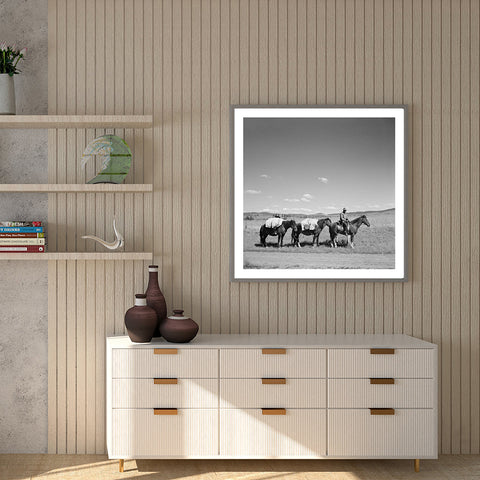At Old Town Print Gallery we pride ourselves on using only the highest quality materials. Our prints are museum quality, with archival ratings of over 100 years. But what exactly does that mean, and how can you make sure your prints last as long as possible?
Understanding Archival Ratings
Materials are tested to determine how long they will last without fading/yellowing under ideal conditions. These ratings are often listed as a range of years, or a greater than value, simply because there are so many factors that can affect how a print ages over a long period of time. Additionally, the combination of materials being used will affect longevity. All of our materials are archival, which helps them each last as long as possible. You can read more about our materials here.
While prints can last as long as these ratings promise, it is important to understand what can cause early fading and yellowing, and how to prevent it.

Factors that affect print longevity
UV exposure is one of the number one factors that can cause a print to fade more quickly. A print hung near a window will fade noticeably quicker than a print that doesn’t get sun exposure.
Moisture is another factor to consider. A print that is displayed near a humidifier, for example, is likely to get exposed to some moisture, which will cause damage. Moisture can cause the paper to warp, and inks to bleed.
Exposure to smoke, such as tobacco and cigarette smoke, will cause discoloration to your prints. Dust gathering on the surface of the print can also cause deterioration over time.
Finally, acidic materials used in some frames can cause yellowing to occur. This is most commonly found with cheaper frame options from big box stores.
How to keep your prints in pristine condition
If you want to keep your prints looking brand new as long as possible, there are several steps you can take. Most importantly, consider the UV exposure a print would get when deciding where to display the print. For best results, you’ll want to minimize the exposure to the print.

Framing with archival, acid-free materials will help greatly in preventing deterioration. This is generally easier to do when custom framing, as you can work directly with the framer, asking questions, and ensuring the materials being used are archival. These materials can be slightly more expensive than their acidic counterparts but are worth the investment to maintain your print. Framing with UV glass is another great step, especially if the print is going to be getting any amount of sun exposure where it’s displayed.
Framing your print also helps combat dust and smoke exposure. Canvas prints have a coat of archival varnish to help protect the surface, but unframed paper prints would be left exposed to the elements. Framing paper prints behind glass helps ensure nothing harmful can land on the surface.
Following these suggestions can help make your print last a lifetime and beyond.
Shop the image featured above: "Sheep Herder on the Trail, Oregon"
